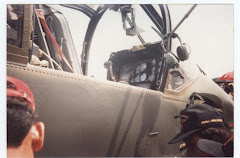The game
Some aspects that the player has control over are inflight crew management (a crewman might become injured during combat and temporary medical aid inflight given to him whilst another aircrewmen tends another crew position), manning an onboard .50 caliber M2 Browning machine gun against enemy fighters, and releasing the B-17 Flying Fortress's ordnance on the target as well as piloting or copiloting the B-17 bomber. All 10 aircrew positions could be controlled either manually or under AI control, however the main character and captain is the primary pilot. His successes, failures, capture, injury or death affects the direction and conclusion of the campaign.
The simulation player could pick out his chosen bomber with its particular nose art and was shown target briefing information and briefing films in the simulation before entering on any mission with his crew. A map of the flight path and waypoints were also shown in the simulation. Although a mission is assigned to the crew before every sortie, the player may break formation and roam freely around Europe if desired, looking for and attacking targets of opportunity. The success of this decision relies on the skill of the crew, particularly if the navigator is skilled enough to navigate Europe on his own and the crew is able to withstand stronger Luftwaffe and Flak attacks due to being alone. The most difficult but prestigious targets were the Nazi strongholds in and around Berlin.
If the player's Fortress is severely damaged, the player may drop out of the formation and continue the mission on one's own or attempt to return to England, in which one can land on any Allied runway and be taken back to the home base at Alconbury. In terms of the artillery, the player is unable to damage his or her own plane using the guns, however, dropping bombs at a low altitude would destroy the plane. The player is also able to shoot down ally Flying Fortresses as a result of friendly fire. An ill-timed shooting of a Luftwaffe fighter may cause the enemy to lose control and collide with one's Fortress or others in the formation.
The game's graphics are very simple (MCGA and VGA) and the requirements are meager when running on an antiquated IBM PC compatible Personal Computer; a Intel 80286 microprocessor based (or comparable AMD) based PC is required at 16 MHz with DOS 5.0 (a soundcard is desirable). However a 80386 or better microprocessor is recommended for this software with at least 640k of RAM. The PC version came out in several floppy disk media types (5- 5.25" high density disks), compact floppy disks, 4-3.5" high density disks) and CD-ROM versions.
Graphics are crude by today's standards, but different targets could easily be discerned from the bombsight, whether a factory or a U-boat pen. Terrain graphics though were very minimal. Luftwaffe forces are also easily seen through the eyes of the gunner. B-17 Flying Fortress came with a 230 page manual which details how to play the simulation, in addition to an in-depth historical section with numerous illustrations and photographs. The simulation also included a keyboard overlay so that the function of keys on the players computer keyboard wouldn't be so confusing during gameplay. For a while B-17 Flying Fortress (DOS version only) was released with permission as freeware by MicroProse on the Internet website http://bombs-away.net.
The simulation is so complex that the player has to have some of the same knowledge (yet only partial and simplified) as the aircrews performed as Pilots, Copilots, Bombardiers, Navigators, Flight Engineers, Radio Operators and Aerial Gunners during that historical time frame. As an interesting sideline note one of the technical advisors to the development of the simulation was Major Joseph N. Worsley (USAAF, Retired) one of the top bombardiers in the USAAF trained in the use of the Norden as well as Sperry bombsights on Boeing B-29's. Dominic Robinson, Technical Director for B-17 Flying Fortress The Mighty 8th also was listed in the software credits for the original title and Andrew Walrond was the Managing Director in the sequel. The sequel B-17 Flying Fortress: The Mighty 8th was eventually acquired by Atari.
Its sequel came out in the year 2000 and B-17 Flying Fortress as freeware was made into a Microsoft Windows 9x running application from the DOS based version for the PC platform. Shockwave Productions has since bought the rights to the code. It can sometimes be found at different abandonware websites on the Internet although the legality of downloading from these sources is questionable. (WIKIPeDIA)








